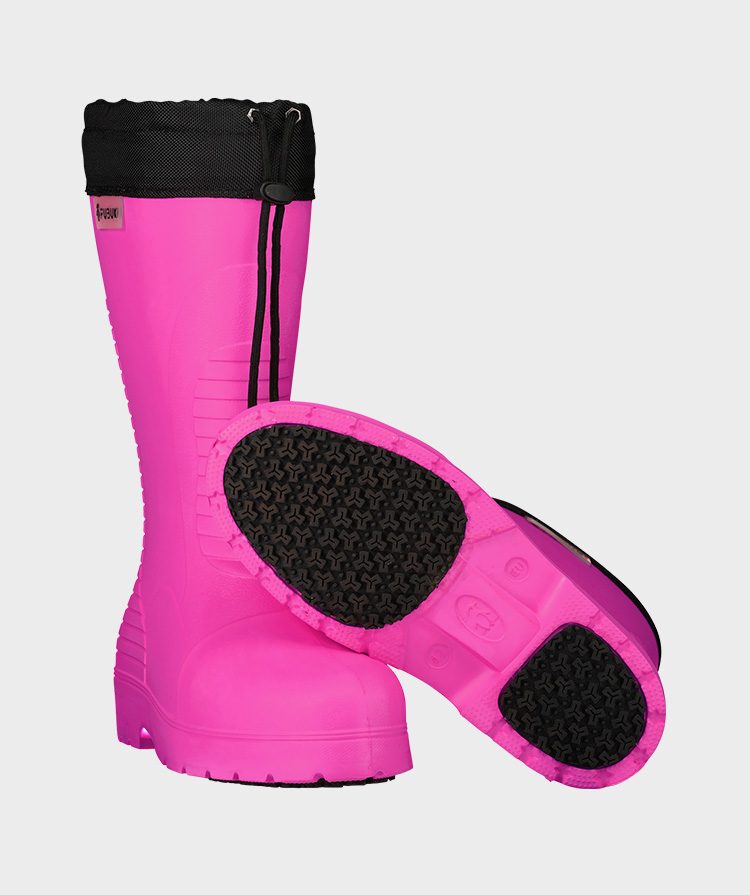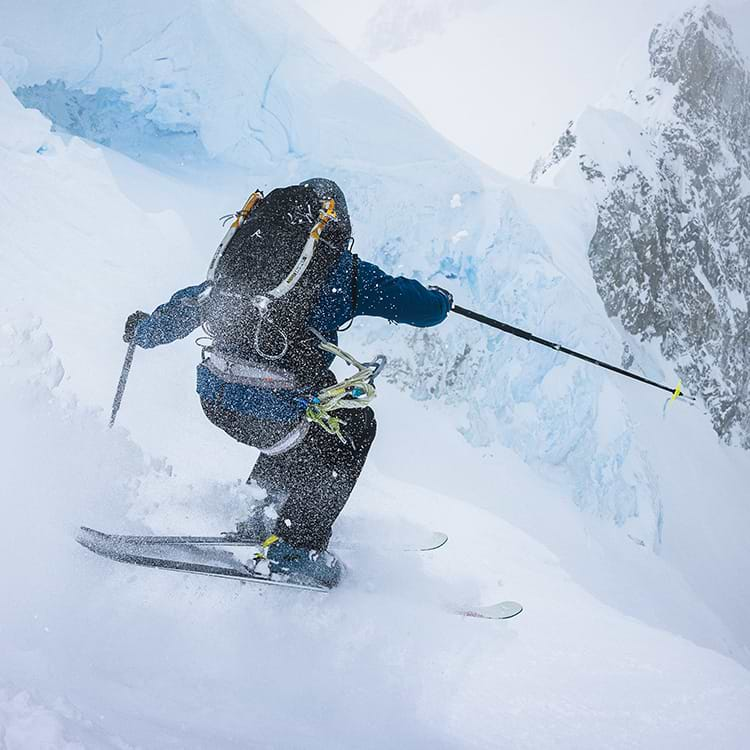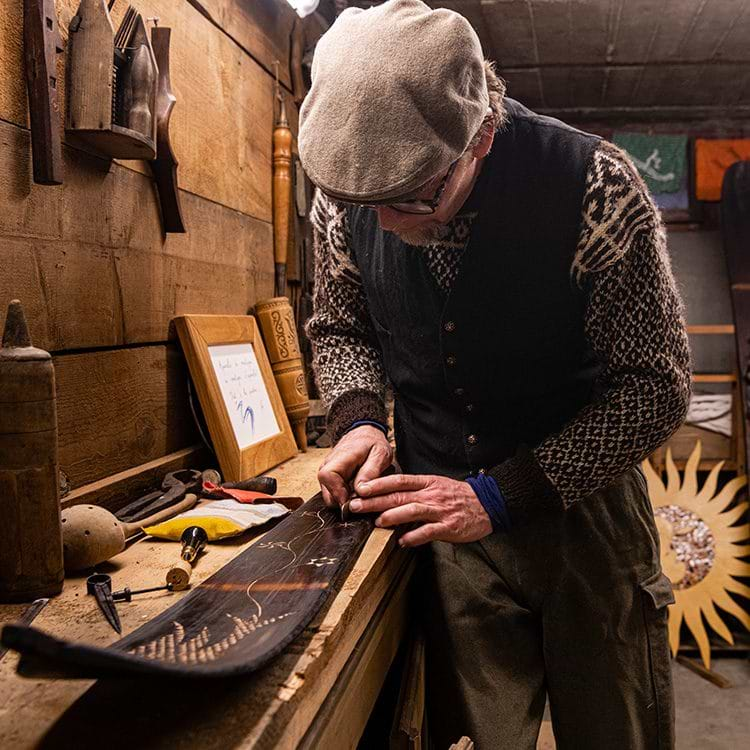Stockholm harbors an inspiring landscape for innovative brands across fashion, gaming, music, film, and advertising. Ski design, however, in Sweden’s flat capital city on the Baltic coast feels somewhat out of place. Undaunted by its headquarters’ distance from the alpine, 1000 Skis is one of the fastest-rising young brands on the global ski scene, and they’ve been doing it directly by not conforming to the status quo.
On the slopes, their vivid—nearly fluorescent—red skis bearing no logos or graphic elements stand out in stark contrast among the field. Fittingly, there’s something unique about the skiers the brand caters toward. Free-minded, creative, playful, and unorthodox, the riders of 1000 Skis represent a new breed of skiers.
The brand’s maverick style starts at the top: founded in 2020 by former X-Games gold medalist Magnus “Skimanguy” Granér, Pär “Peyben” Hägglund, Alex Hackel and Lucas Stål-Madison of the renowned ski and film collective The Bunch, along with the group’s lead photographer and art director, Alric Ljunghager, 1000 Skis boasts a special kind of street (and backcountry) credit.
The Bunch’s monumental films have swept the floor of international film festivals for years, and the crew has established its own unique genre and style that blends street and park moves with modern, innovative backcountry skiing. Over time, The Bunch has become a brand, including a production company with loads of commercial work outside the ski industry. So, adding a ski company to the day-to-day workflow did not scare the tight-knit group of friends.
“Ever since I was a kid, growing up skiing in the tiny Bollebacken in Bollnäs [in the middle of Sweden], I have been dreaming about creating skis precisely as I want them to feel, look and function,” says Hägglund. “That trumped signing with any other brand and just carry on.”
Granér, on the other hand, had several pro models at the US-based ski brand ON3P; however, he was much more stoked about working with his best friends and building a brand from the ground up.
Magnus Granér
1000–or Tusen, Swedish for thousand–sprung out of a will to be transparent and sustainable, and the idea of making skis by skiers for skiers felt necessary for the crew.
The skis are manufactured in Åre Ski Factory in Såå, a tiny village at the foot of the mountains in Jämtland county and minutes from the buzzing ski town of Åre, the epicentre of skiing in Sweden. Åre Ski Factory, Sweden’s only alpine ski factory, has been manufacturing skis and snowboards for various brands since 1981 and has a reputation for producing high-quality skis with a minimal environmental impact. The manufacturing facility runs on 100 percent renewable and fossil-free energy. Leftover plastic is recycled, while excess wood is used for local district heating. Because of the energy mix in north-central Sweden, the factory can produce skis with an exceptionally low carbon footprint.
In its fourth year in business, 1000 is still owned and operated exclusively by the founders. The company hopes to keep all manufacturing in Åre Ski Factory if the location’s capacity can match the constantly growing demand. 1000 operates without outside investors and sells directly to consumers. It’s an intentionally hands-on approach designed to keep the company’s ethos, communication, and quality control close to home.
Pär Hägglund
So far, the 1000 Skis line-up only consists of three models of skis: Park, All Mountain, and Powder. Across the board, the skis are relatively soft, easy to navigate, and don’t have much rocker. More of the edge touches the snow, opening up possibilities for both good and less experienced skiers.
Magnus Granér
Besides the different shapes and widths, they all look the same with the characteristic red colour that has become synonymous with the brand.
“The skis market themselves to a certain extent,” explains Granér. “They scream, but at the same time, they are just entirely red. They are discreet in the same way as they quickly become the 800-pound gorilla in the room.”
Granér and Hägglund talk a lot about going against mainstream thoughts regarding ski length, width, and style. They suggest skiers have historically been told to choose specific skis for suspect reasons.
“Look at surfing, where you pick boards depending on the waves and how you want to surf that day. Why not think a bit more like that when it comes to skiing?”
While the look of the red skis put 1000 Skis on the map, the company’s understanding of modern marketing is even more crucial, primarily via social media and gorilla marketing efforts in ski communities. With a strong presence in new media, they have figured out how to crack the algorithms with compelling visual content that applies to their trendy, young audience.
“But mainly, we trust our gut in all situations, especially regarding the actual skis. If we don’t compromise with our products – and if we like our skis – others will like them too. It’s a pretty simple formula, and it works for us so far.”


















































